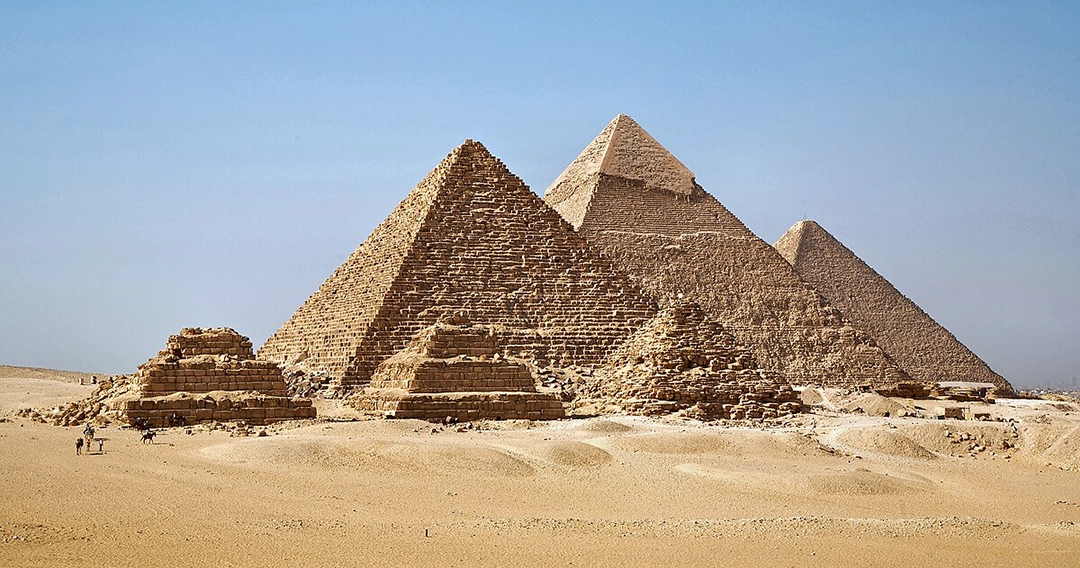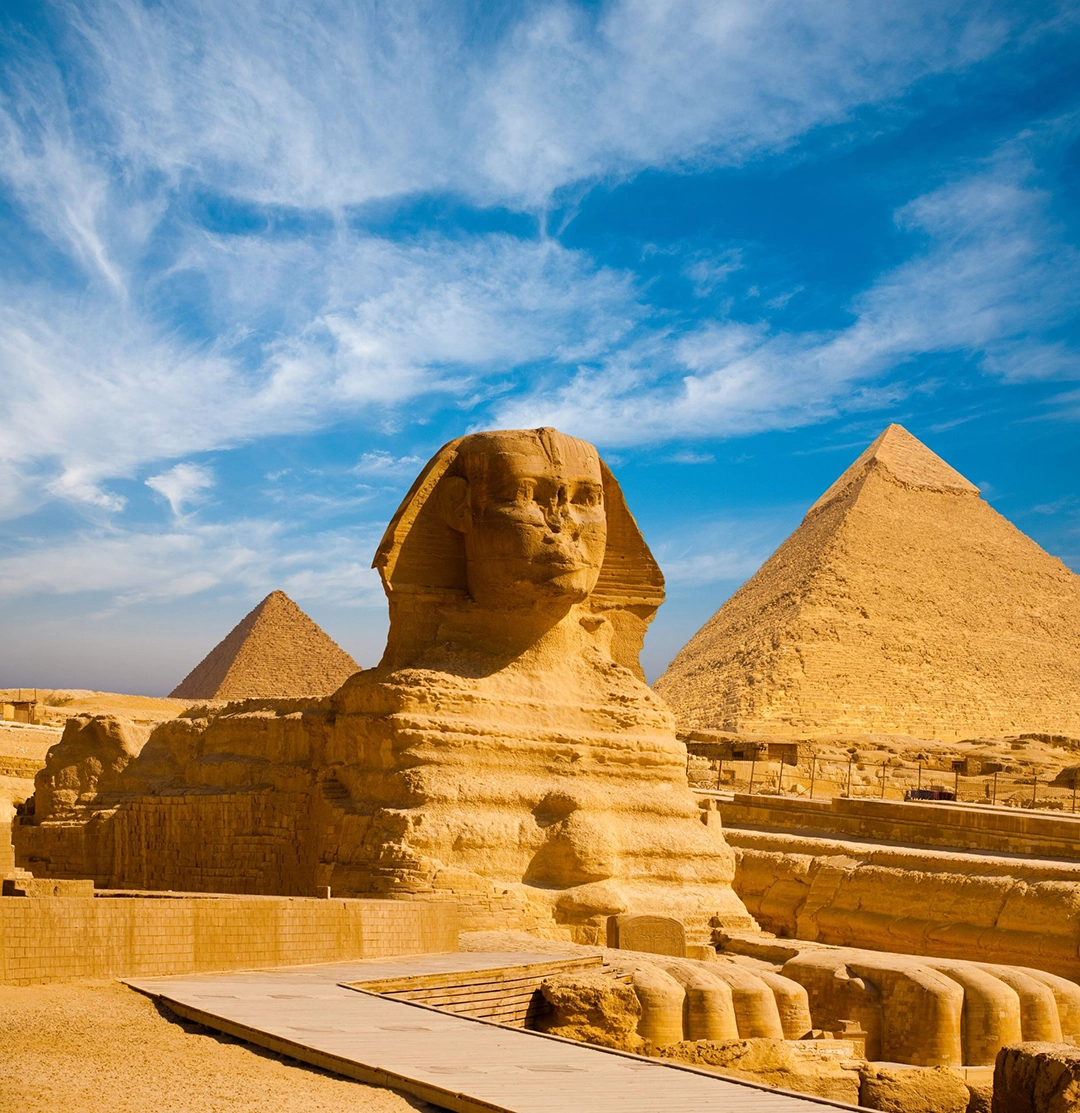 Go to English Version
Go to English VersionIt’s not going to happen, of course, but let us imagine that, suddenly, the Egyptian people —not in an Arab spring but in an Arab autumn— decide that their past is shameful, that all its physical evidence, its traces and monuments, must be erased. They rush with torches along the western bank of the Nile —the shore of the dead: Giza, Saqqara, Luxor, Thebes, Abu Simbel— in a near-telluric frenzy of destruction, intent on rewriting history from the point of view of the oppressed, of those first laborers, bakers, and scribes.
Would it make any sense? How many of the offended would such an undertaking require, and for how long? A simple, approximate arithmetic would reveal that between three and six hundred thousand of the indignant would be needed. Each of them would have to move around six blocks weighing two to three tons over a period of at least ten years —only to destroy the Great Pyramid.

What if they came up with the idea of throwing the Sphinx into the river?
With favorable winds and all current technology at their disposal, they would still need between three and five thousand specialized workers, a budget of roughly five hundred million dollars, and twenty or thirty years. Better to leave her where she stands.
How would morality operate in such a case?
That what was once deemed culpable should one day become heritage is merely a matter of time. Unlike the light statues of Christopher Columbus —still warm in the public debate— the monumental effigies of the pharaohs have cooled with the centuries and no longer stir controversy. Their violence has become too historical, and history, once catalogued and archived, loses its moral edge. Ancient cruelty has turned into an aesthetic category, its suffering reduced to residual context. Their atrocities are now as fossilized as the Tyrannosaurus rex in the natural history museum. Out of poetic justice we topple only the statues that can be toppled: those light enough, those standing within reach. The image of a ninety-ton pharaoh would be condemned as an act of cultural vandalism against civilization. The difference between them is not moral, but chronological and logistical.
Ramses II waged several military campaigns against the Hittites, in what is now Syria and Nubia, and others to secure control over the trade routes to the south. He launched operations in Canaan to reaffirm Egypt’s presence in western Asia; all of them were carved into reliefs and temples, consolidating his image as a divine warrior and protector of maat —the universal order. How many slaves, one wonders, did he bring to Egypt, offering them permanent residence in airy settlements beside monumental projects such as Abu Simbel, the Ramesseum, and the vast extensions of Karnak and Luxor?
History has calmly classified these enterprises as “collective effort,” with an almost pastoral serenity —as though millions had freely decided, out of civic or pre-touristic inspiration, to abandon their families and bake themselves under the nourishing sun of the desert. That “voluntary labor” has replaced any suspicion of exploitation with an implausible devotion to stone. No one today seems disturbed by the detail that such enterprises required entire generations of replaceable bodies, fed on bread and onions, trained to serve the divine order of a king who, upon dying, would ascend to heaven upon their bones. Monumental epic dries the tears of men.
We forgive suffering too easily when its outcome is majestic. No one demands the demolition of the pyramids, the Mayan temples, or the imperial Chinese walls. Their anonymous dead are absorbed into the beauty of their stones. The Ministry of Tourism —and with it, the national narrative— forgives much faster. The perfection of geometry makes invisible the hands that raised it. These works will remain because we choose to look at them that way.
I prefer not to speak of all the modern believers who visit the Roman Colosseum, posing for selfies before its walls —walls behind which the first Christians were thrown to the lions.
Many civilizations that were once primitive and brutal are now considered foundational, their monuments standing unscathed as symbols of identity and national pride. To question them would be to dynamite the very roots of nationhood. The Mexica sacrifices —rituals of political and religious control— are now described as “manifestations of a profound worldview,” a way of understanding the balance between life, death, and the cosmos. Those sacrifices were hastily turned into cultural heritage. The last of them took place between 1519 and 1521, during the fall of Tenochtitlan. By then, the universities of Bologna, Oxford, Cambridge, the Sorbonne, Salamanca, Coimbra, Valladolid, Padua, Heidelberg, and Krakow had already been active for centuries. Just a temporal reference.
To learn to look at history with measure is to learn to preserve it. It does not mean blindly celebrating every episode, nor erasing those we find intolerable. Each stone can be read both as evidence of human greatness and of its fragility and imperfection. Each belongs to a board, to a structure that must be read by generations to come. To remove them, to erase them, is to render them illegible —useless for drawing experience from them. To keep them at hand, even in the deepest basements, is to allow men and women to face the most honest of mirrors.










Comments powered by Talkyard.